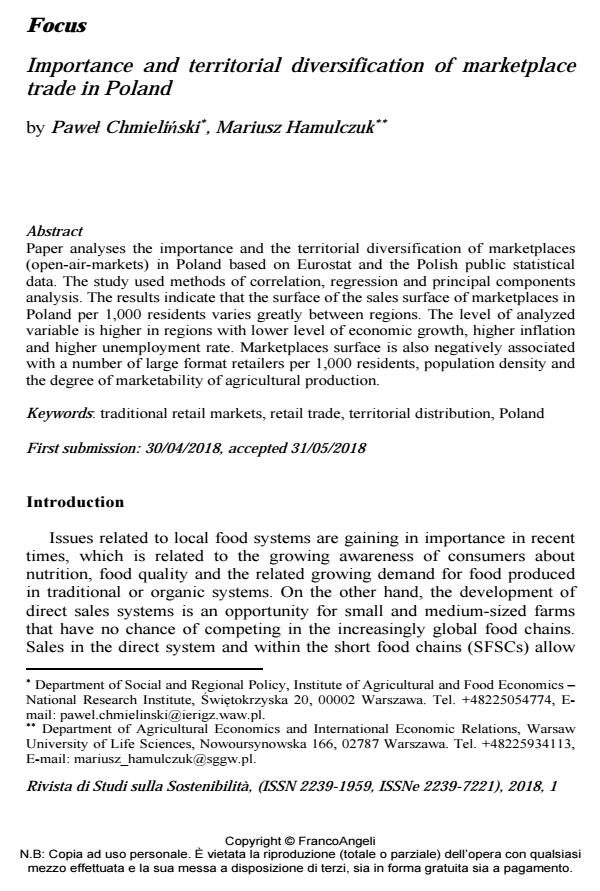Importance and territorial diversification of marketplace trade in Poland
Journal title RIVISTA DI STUDI SULLA SOSTENIBILITA'
Author/s Pawel Chmielinski, Mariusz Hamulczuk
Publishing Year 2018 Issue 2018/1
Language English Pages 19 P. 211-229 File size 563 KB
DOI 10.3280/RISS2018-001015
DOI is like a bar code for intellectual property: to have more infomation
click here
Below, you can see the article first page
If you want to buy this article in PDF format, you can do it, following the instructions to buy download credits

FrancoAngeli is member of Publishers International Linking Association, Inc (PILA), a not-for-profit association which run the CrossRef service enabling links to and from online scholarly content.
Paper analyses the importance and the territorial diversification of marketplaces (open-air-markets) in Poland based on Eurostat and the Polish public statistical data. The study used methods of correlation, regression and principal components analysis. The results indicate that the surface of the sales surface of marketplaces in Poland per 1,000 residents varies greatly between regions. The level of analyzed variable is higher in regions with lower level of economic growth, higher inflation and higher unemployment rate. Marketplaces surface is also negatively associated with a number of large format retailers per 1,000 residents, population density and the degree of marketability of agricultural production.
Keywords: Traditional retail markets, retail trade, territorial distribution, Poland
Pawel Chmielinski, Mariusz Hamulczuk, Importance and territorial diversification of marketplace trade in Poland in "RIVISTA DI STUDI SULLA SOSTENIBILITA'" 1/2018, pp 211-229, DOI: 10.3280/RISS2018-001015